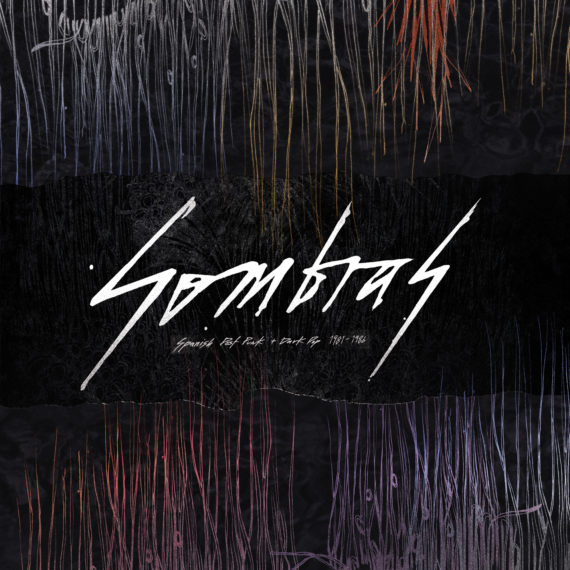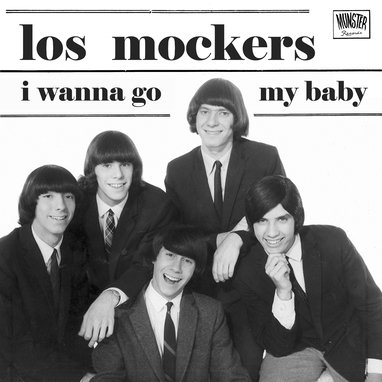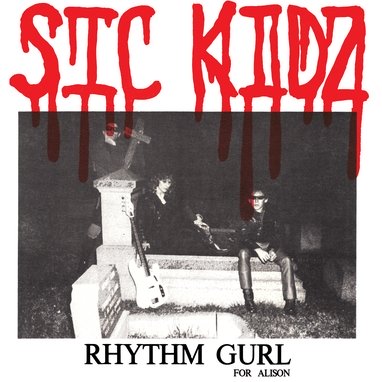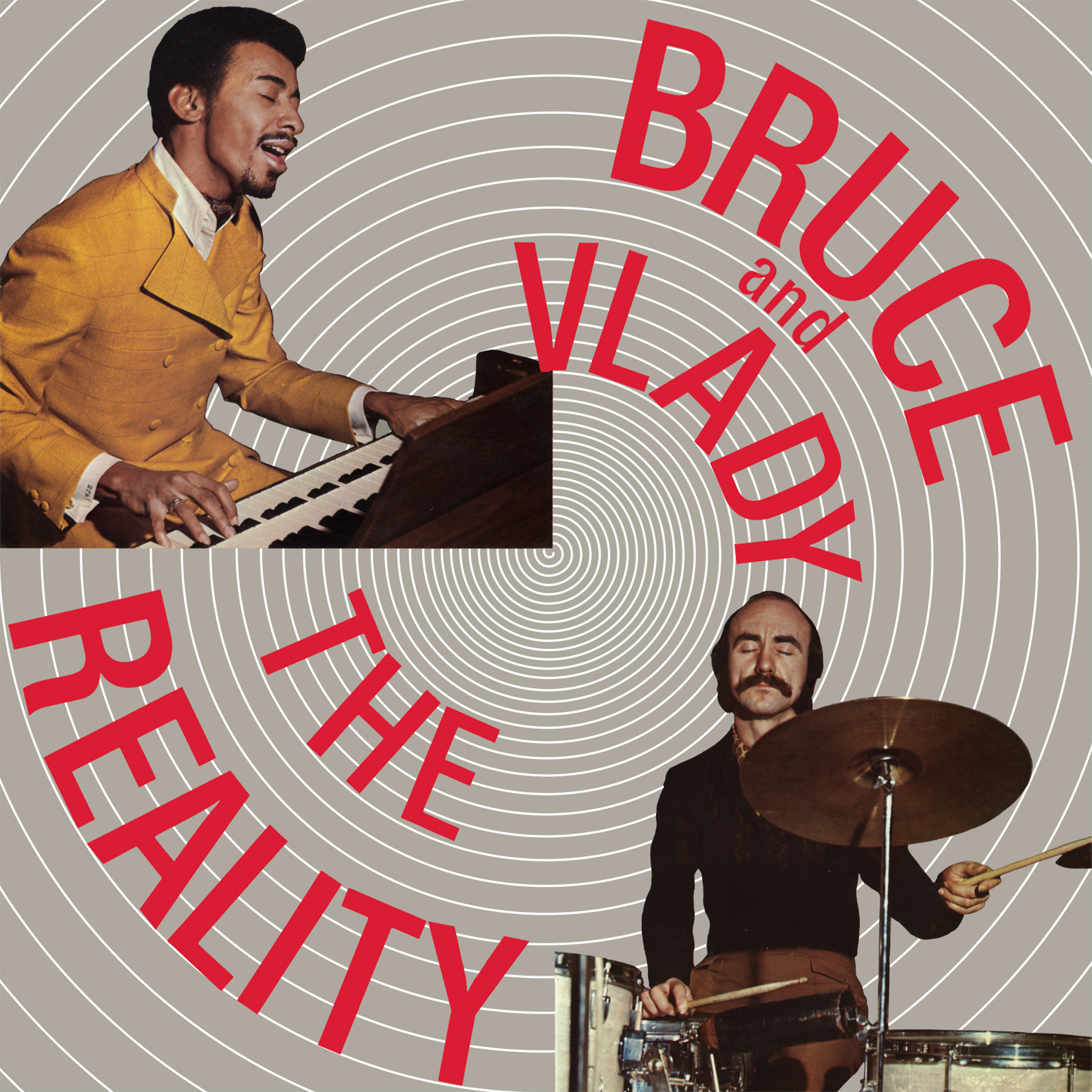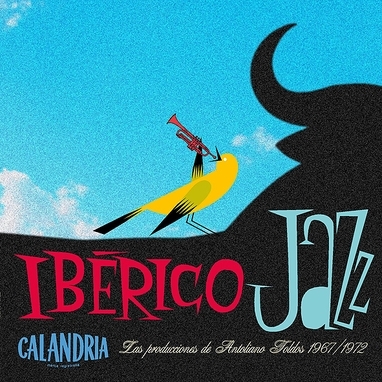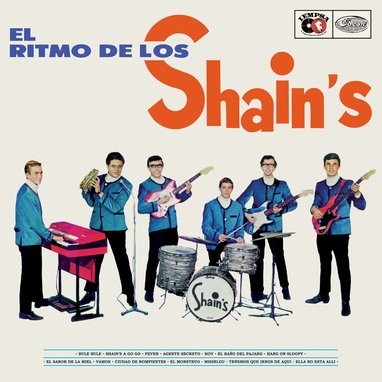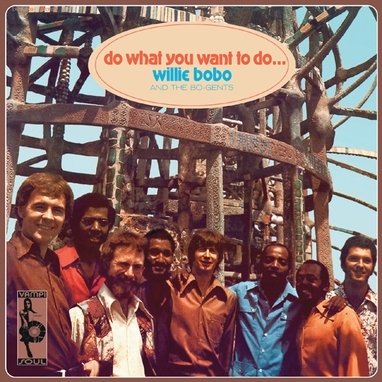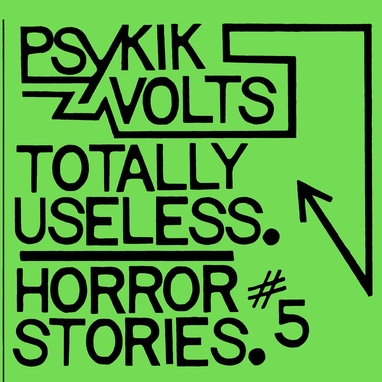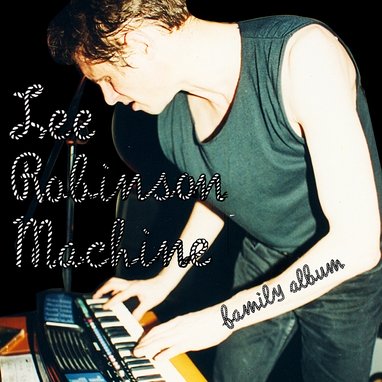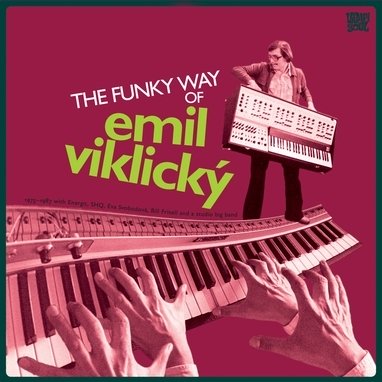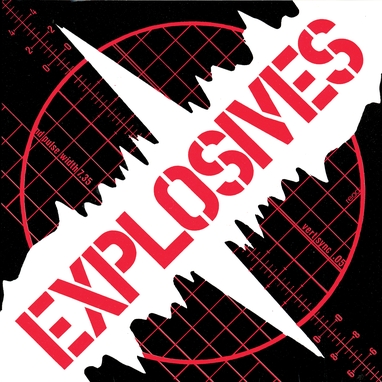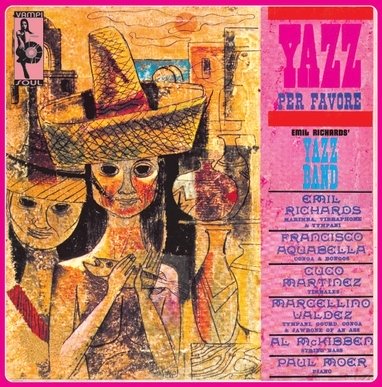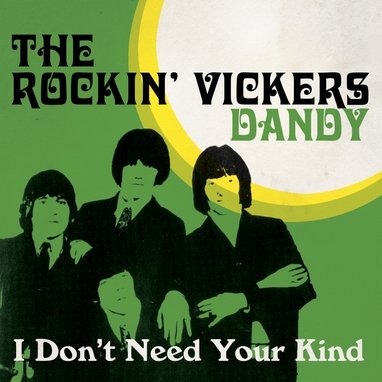VVAA
Sombras. Spanish post-punk and dark pop 1981-1986
Munster
VVAA
Sombras. Spanish post-punk and dark pop 1981-1986
“Sombras” is the first compilation to survey in depth the darker side of the fledgling, vibrant music scene of early 80s Spain. Featuring 42 artists, including essential names such as Parálisis Permanente, Décima Víctima, Desechables, Gabinete Caligari, Derribos Arias, Ana Curra, Polansky y el Ardor, Los Monaguillosh, Alphaville, Claustrofobia, Agrimensor K, Matrona Impúdica, Ultratruita, Ceremonia, New Buildings and many more. Both formats include booklets with an essay in Spanish and English by journalist Jesús Rodríguez Lenin and contributions by Beatriz Alonso Aranzábal (Los Monaguillosh) and Carlos Entrena (Décima Víctima). Plus many artist photos and memorabilia
The damn “Movida”… The best that can be said of that phenomenon is that it was the starting point and the trigger of something else, of another movement that garnered no fame but was far more interesting musically and intellectually, although the glow of glamor went to the fatuous flames of superficiality. This other movement, in contrast, had neither name nor anyone singing its praises. It centered on the existential angst described by the Danish philosopher Søren Kierkegaard instead of the jovial innocence of silly pop in the late 70s and the very early 80s of the last century. It wasn’t a time for joking around. In the streets there was fear to go out at night and, yes, in the daytime too. There were bank robberies and brutal terrorist attacks. Unemployment was reaching scandalous heights (percentage-wise almost the same as those which have devastated Spain since the fall of Lehman Brothers in 2008). Salaries, meanwhile, were miserable… There were even attempts at a coup d’état and heroin began its sinister reign among drugs before AIDS dramatically knocked us off our high “horse”. Was there anything to celebrate? No. The outlook was grim and, logically, after a few years that we had wanted to celebrate because of the death of Franco, murky and ominous images began to inhabit the collective subconscious of those youths who were apolitical by necessity. The most extraordinary paradox is that is that it was a light-hearted new wave group, Ejecutivos Agresivos, that served as the seed for this shift in orientation. Many characters came together in that group who were going to do a 180 on the music that was being made. Carlos Entrena, their singer, who would be one of the founders of the GASA label and the leader of Décima Víctima was there. Also there was Ignacio Gasca, a boy from San Sebastián known as Poch who, after the break up of Ejecutivos Agresivos, would form Derribos Arias. Jaime Urrutia was in the line-up, who would soon be the singer and guitarist of Gabinete Caligari. The band included Juan Luis Vizcaya, who had a brief stint as the drummer of Alaska y los Pegamoides. Also a member was Paco Trinidad, who would be another of the founders of GASA and who, with time, would become the main record producer of the 1980s (Hombres G, Duncan Dhu…). The transition from one era to another even had an exact date: the 13th of November 1982. On that day, in the auditorium of the Escuela de Caminos de Madrid, took place the last concert that Alaska y los Pegamoides played in Madrid, although none of the members themselves knew this for sure at the time. They gave to their fans, along with the tickets, a flexi-disc that included two unreleased songs – ‘Volar’ and ‘El jardín’ – both written by Eduardo Benavente (also of Parálisis Permanente), with a theme and style that had nothing to do with what Alaska y los Pegamoides had done so far. To wrap up that moment symbolically, the group that opened the show was Los Monaguillosh, who would shortly become one of the best-known bands of the nascent psychedelic “siniestro” sound… Jesús Rodríguez Lenin
Productos relacionados
“Sombras” is the first compilation to survey in depth the darker side of the fledgling, vibrant music scene of early 80s Spain. Featuring 42 artists, including essential names such as Parálisis Permanente, Décima Víctima, Desechables, Gabinete Caligari, Derribos Arias, Ana Curra, Polansky y el Ardor, Los Monaguillosh, Alphaville, Claustrofobia, Agrimensor K, Matrona Impúdica, Ultratruita, Ceremonia, New Buildings and many more. Both formats include booklets with an essay in Spanish and English by journalist Jesús Rodríguez Lenin and contributions by Beatriz Alonso Aranzábal (Los Monaguillosh) and Carlos Entrena (Décima Víctima). Plus many artist photos and memorabilia
The damn “Movida”… The best that can be said of that phenomenon is that it was the starting point and the trigger of something else, of another movement that garnered no fame but was far more interesting musically and intellectually, although the glow of glamor went to the fatuous flames of superficiality. This other movement, in contrast, had neither name nor anyone singing its praises. It centered on the existential angst described by the Danish philosopher Søren Kierkegaard instead of the jovial innocence of silly pop in the late 70s and the very early 80s of the last century. It wasn’t a time for joking around. In the streets there was fear to go out at night and, yes, in the daytime too. There were bank robberies and brutal terrorist attacks. Unemployment was reaching scandalous heights (percentage-wise almost the same as those which have devastated Spain since the fall of Lehman Brothers in 2008). Salaries, meanwhile, were miserable… There were even attempts at a coup d’état and heroin began its sinister reign among drugs before AIDS dramatically knocked us off our high “horse”. Was there anything to celebrate? No. The outlook was grim and, logically, after a few years that we had wanted to celebrate because of the death of Franco, murky and ominous images began to inhabit the collective subconscious of those youths who were apolitical by necessity. The most extraordinary paradox is that is that it was a light-hearted new wave group, Ejecutivos Agresivos, that served as the seed for this shift in orientation. Many characters came together in that group who were going to do a 180 on the music that was being made. Carlos Entrena, their singer, who would be one of the founders of the GASA label and the leader of Décima Víctima was there. Also there was Ignacio Gasca, a boy from San Sebastián known as Poch who, after the break up of Ejecutivos Agresivos, would form Derribos Arias. Jaime Urrutia was in the line-up, who would soon be the singer and guitarist of Gabinete Caligari. The band included Juan Luis Vizcaya, who had a brief stint as the drummer of Alaska y los Pegamoides. Also a member was Paco Trinidad, who would be another of the founders of GASA and who, with time, would become the main record producer of the 1980s (Hombres G, Duncan Dhu…). The transition from one era to another even had an exact date: the 13th of November 1982. On that day, in the auditorium of the Escuela de Caminos de Madrid, took place the last concert that Alaska y los Pegamoides played in Madrid, although none of the members themselves knew this for sure at the time. They gave to their fans, along with the tickets, a flexi-disc that included two unreleased songs – ‘Volar’ and ‘El jardín’ – both written by Eduardo Benavente (also of Parálisis Permanente), with a theme and style that had nothing to do with what Alaska y los Pegamoides had done so far. To wrap up that moment symbolically, the group that opened the show was Los Monaguillosh, who would shortly become one of the best-known bands of the nascent psychedelic “siniestro” sound… Jesús Rodríguez Lenin
Productos relacionados
Sombras. Spanish post-punk and dark pop 1981-1986
“Sombras” is the first compilation to survey in depth the darker side of the fledgling, vibrant music scene of early 80s Spain. Featuring 42 artists, including essential names such as Parálisis Permanente, Décima Víctima, Desechables, Gabinete Caligari, Derribos Arias, Ana Curra, Polansky y el Ardor, Los Monaguillosh, Alphaville, Claustrofobia, Agrimensor K, Matrona Impúdica, Ultratruita, Ceremonia, New Buildings and many more. Both formats include booklets with an essay in Spanish and English by journalist Jesús Rodríguez Lenin and contributions by Beatriz Alonso Aranzábal (Los Monaguillosh) and Carlos Entrena (Décima Víctima). Plus many artist photos and memorabilia
The damn “Movida”… The best that can be said of that phenomenon is that it was the starting point and the trigger of something else, of another movement that garnered no fame but was far more interesting musically and intellectually, although the glow of glamor went to the fatuous flames of superficiality. This other movement, in contrast, had neither name nor anyone singing its praises. It centered on the existential angst described by the Danish philosopher Søren Kierkegaard instead of the jovial innocence of silly pop in the late 70s and the very early 80s of the last century. It wasn’t a time for joking around. In the streets there was fear to go out at night and, yes, in the daytime too. There were bank robberies and brutal terrorist attacks. Unemployment was reaching scandalous heights (percentage-wise almost the same as those which have devastated Spain since the fall of Lehman Brothers in 2008). Salaries, meanwhile, were miserable… There were even attempts at a coup d’état and heroin began its sinister reign among drugs before AIDS dramatically knocked us off our high “horse”. Was there anything to celebrate? No. The outlook was grim and, logically, after a few years that we had wanted to celebrate because of the death of Franco, murky and ominous images began to inhabit the collective subconscious of those youths who were apolitical by necessity. The most extraordinary paradox is that is that it was a light-hearted new wave group, Ejecutivos Agresivos, that served as the seed for this shift in orientation. Many characters came together in that group who were going to do a 180 on the music that was being made. Carlos Entrena, their singer, who would be one of the founders of the GASA label and the leader of Décima Víctima was there. Also there was Ignacio Gasca, a boy from San Sebastián known as Poch who, after the break up of Ejecutivos Agresivos, would form Derribos Arias. Jaime Urrutia was in the line-up, who would soon be the singer and guitarist of Gabinete Caligari. The band included Juan Luis Vizcaya, who had a brief stint as the drummer of Alaska y los Pegamoides. Also a member was Paco Trinidad, who would be another of the founders of GASA and who, with time, would become the main record producer of the 1980s (Hombres G, Duncan Dhu…). The transition from one era to another even had an exact date: the 13th of November 1982. On that day, in the auditorium of the Escuela de Caminos de Madrid, took place the last concert that Alaska y los Pegamoides played in Madrid, although none of the members themselves knew this for sure at the time. They gave to their fans, along with the tickets, a flexi-disc that included two unreleased songs – ‘Volar’ and ‘El jardín’ – both written by Eduardo Benavente (also of Parálisis Permanente), with a theme and style that had nothing to do with what Alaska y los Pegamoides had done so far. To wrap up that moment symbolically, the group that opened the show was Los Monaguillosh, who would shortly become one of the best-known bands of the nascent psychedelic “siniestro” sound… Jesús Rodríguez Lenin
“Sombras” is the first compilation to survey in depth the darker side of the fledgling, vibrant music scene of early 80s Spain. Featuring 42 artists, including essential names such as Parálisis Permanente, Décima Víctima, Desechables, Gabinete Caligari, Derribos Arias, Ana Curra, Polansky y el Ardor, Los Monaguillosh, Alphaville, Claustrofobia, Agrimensor K, Matrona Impúdica, Ultratruita, Ceremonia, New Buildings and many more. Both formats include booklets with an essay in Spanish and English by journalist Jesús Rodríguez Lenin and contributions by Beatriz Alonso Aranzábal (Los Monaguillosh) and Carlos Entrena (Décima Víctima). Plus many artist photos and memorabilia
The damn “Movida”… The best that can be said of that phenomenon is that it was the starting point and the trigger of something else, of another movement that garnered no fame but was far more interesting musically and intellectually, although the glow of glamor went to the fatuous flames of superficiality. This other movement, in contrast, had neither name nor anyone singing its praises. It centered on the existential angst described by the Danish philosopher Søren Kierkegaard instead of the jovial innocence of silly pop in the late 70s and the very early 80s of the last century. It wasn’t a time for joking around. In the streets there was fear to go out at night and, yes, in the daytime too. There were bank robberies and brutal terrorist attacks. Unemployment was reaching scandalous heights (percentage-wise almost the same as those which have devastated Spain since the fall of Lehman Brothers in 2008). Salaries, meanwhile, were miserable… There were even attempts at a coup d’état and heroin began its sinister reign among drugs before AIDS dramatically knocked us off our high “horse”. Was there anything to celebrate? No. The outlook was grim and, logically, after a few years that we had wanted to celebrate because of the death of Franco, murky and ominous images began to inhabit the collective subconscious of those youths who were apolitical by necessity. The most extraordinary paradox is that is that it was a light-hearted new wave group, Ejecutivos Agresivos, that served as the seed for this shift in orientation. Many characters came together in that group who were going to do a 180 on the music that was being made. Carlos Entrena, their singer, who would be one of the founders of the GASA label and the leader of Décima Víctima was there. Also there was Ignacio Gasca, a boy from San Sebastián known as Poch who, after the break up of Ejecutivos Agresivos, would form Derribos Arias. Jaime Urrutia was in the line-up, who would soon be the singer and guitarist of Gabinete Caligari. The band included Juan Luis Vizcaya, who had a brief stint as the drummer of Alaska y los Pegamoides. Also a member was Paco Trinidad, who would be another of the founders of GASA and who, with time, would become the main record producer of the 1980s (Hombres G, Duncan Dhu…). The transition from one era to another even had an exact date: the 13th of November 1982. On that day, in the auditorium of the Escuela de Caminos de Madrid, took place the last concert that Alaska y los Pegamoides played in Madrid, although none of the members themselves knew this for sure at the time. They gave to their fans, along with the tickets, a flexi-disc that included two unreleased songs – ‘Volar’ and ‘El jardín’ – both written by Eduardo Benavente (also of Parálisis Permanente), with a theme and style that had nothing to do with what Alaska y los Pegamoides had done so far. To wrap up that moment symbolically, the group that opened the show was Los Monaguillosh, who would shortly become one of the best-known bands of the nascent psychedelic “siniestro” sound… Jesús Rodríguez Lenin

